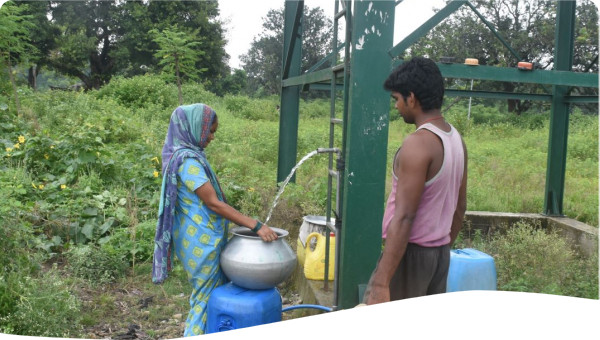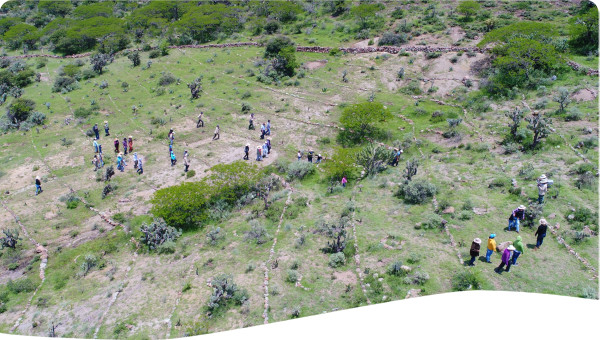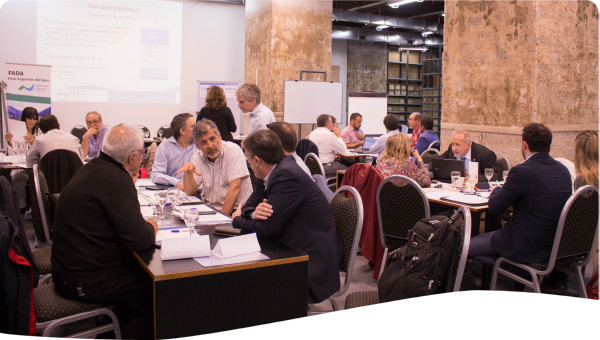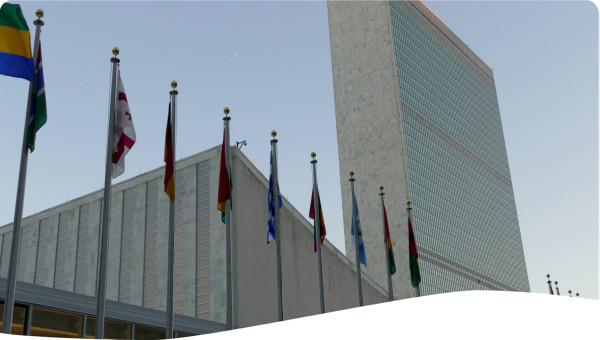In the village of Parakar, untreated wastewater contaminated agricultural lands, jeopardised food safety and posed severe health risks. In 2010, the Parakar community supported by partners from the Country Water Partnerships of Armenia initiated and developed a demonstration pilot project for domestic wastewater treatment. Particular attention was given to community involvement. This case illustrates the value of small scale solutions.
During the Soviet years the households` wastewater of the Yerevan’s nearby villages was pumped by two-stage pumping system to the wastewater collector of Yerevan’s districts and then transported to “Aeratsia” treatment plant of the Armenian capital Yerevan. Due to the energy crisis after the collapse of the USSR, the pump stations terminated their operation in the villages and left local community without appropriate sanitation services.
In the village of Parakar, the wastewater was removed through the wastewater system up to the non-operating pumping station in the center of the village and afterwards discharged into the open irrigation canal passing nearby the pumping station and through the village and infiltrated into ground.
After mixing of the domestic wastewater with irrigation water, the latter was not used for irrigation purposes and about 100 ha agricultural lands remained uncultivated. Flowing out the irrigation canal, the wastewater contaminated the cultivated lands, degraded qualitative indicators of the lands, jeopardized food safety.
In addition, this situation posed a serious risk for break-out of intestinal and epidemic diseases, especially during summer. This seemed to be un-solvable problem as the management of water services, agriculture activities, and community health issues were administratively fragmented, the village authorities did not have both expertise and financial sources and farmers were left without appropriate awareness regarding food production risks.
In 2010 Parakar’ community was supported by partners from Country Water Partnerships of Armenia initiated and developed a demonstration pilot project for domestic wastewater treatment.
The project implied applying lagoon type of wastewater treatment system for the first time in Armenia, which has a broad application in many countries. This type is relatively cost-effective to build and operate. This technology was adapted for Armenian conditions and the treatment structures were designed in a way that allows treating the domestic wastewater to the quality required for irrigation water and using the treated wastewater for irrigation purposes.
During the project implementation, a special attention was paid to public awareness raising and formation of appropriate attitude of population towards the new wastewater treatment technology.
By means of information leaflets and round tables, the community population was informed about the project goals, the implemented works and the anticipated outcomes. The population was informed as about the positive impacts of the project on the environment, health and social-economic condition. This made a solid base for community approach in complex water solutions that would not be possible without taking IWRM approach.
As a result, the waste water treatment is now operational allowing an use of treated water for irrigation.
Despite being at the early stages, the project has already visible outcomes. First of all it provides a local solution for the local level problems. Second it improves the level of community involvement in the local water management. Then, it definitely provides benefits of integrated approach, since it incorporates waste water service, improves condition of the irrigation system and reduces degradation of community farmlands as well as health conditions in the village. It is assumed that the project will also contribute to development of small business in Parakar, i.e. establishment of the community-based entity for operation of the wastewater treatment system and development of fish industry in the future.
In case of the small villages’ issues being neglected by the big water service investors, alternative initiatives are appropriate to consider.
Similar to other IWRM cases, local and small scale solutions proved to be one of the best alternatives in this case.
There are possibilities to incorporate integrated aspects of IWRM (e.g waste water service, improvement of condition for irrigation system and reduced degradation of community farmlands as well as public health considerations).
Community involvement is needed to make reasonable technical and financial plans. At the same time, there is a need to provide relevant information about health and environmental concerns in advance; to ensure responsive and responsible participation climate in the community.
 Case studies
Case studies


